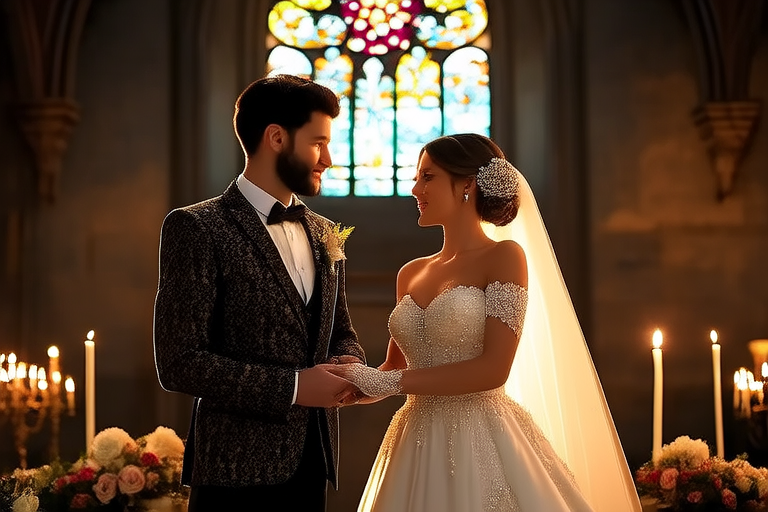The Intricate World of Global Wedding Traditions

“`html
The Intricate World of Global Wedding Traditions
Introduction
Weddings are universally celebrated as a rite of passage, marking the beginning of a new chapter in a couple’s life. Across the globe, these celebrations are deeply rooted in cultural heritage, each offering a unique blend of rituals, customs, and symbolism. From the vibrant colors of Indian weddings to the serene elegance of Japanese ceremonies, every tradition tells a story of love, respect, and community. This article explores the diverse wedding customs practiced around the world, highlighting their cultural significance and unique characteristics.
In this journey through global wedding traditions, we will delve into the rich tapestry of ceremonies from Asia, Europe, Africa, the Middle East, and Central Asia, as well as North America and Latin America. Each section will offer insights into the historical, social, and religious contexts that shape these celebrations.
Section 1: Asian Wedding Traditions
Traditional Indian Weddings
Indian weddings are known for their elaborate pre-wedding ceremonies, which can span several days. The Haldi ceremony involves applying turmeric paste to the bride and groom, believed to bring good health and prosperity. The Sangeet, a musical celebration, features singing, dancing, and storytelling. On the wedding day, the Mehendi ceremony involves intricate henna designs, symbolizing the couple’s bond. The main wedding ceremony includes the Kanyadaan, where the bride’s father gives her away, and the Saptapadi, where the couple takes seven vows.
Chinese Wedding Customs
Chinese weddings are characterized by the tea ceremony, where the couple serves tea to their parents, symbolizing respect and gratitude. Red is the color of choice, representing joy and happiness. The bride traditionally wears a red dress and veil, while the groom wears a black robe. The couple exchanges rings during the ceremony, and guests shower them with red envelopes containing money, symbolizing good fortune.
Japanese Wedding Practices
Japanese weddings are often held at Shinto shrines, reflecting the country’s deep spiritual roots. The San-san-kudo ritual involves the couple taking three sips from three cups of sake, symbolizing the union of their lives. The bride typically wears a white kimono, symbolizing purity, while the groom wears a formal black suit. The ceremony emphasizes the continuity of family lineage and the importance of ancestral spirits.
Section 2: European Wedding Traditions
Historical Significance of European Weddings
European weddings have a long history, deeply intertwined with religious and cultural practices. In Greece, Orthodox Christian weddings feature the couple crowning ceremony, where they are adorned with wreaths symbolizing their eternal union. In Italy, Catholic weddings often include the blessing of the rings and the exchange of vows in front of the altar. Spanish weddings are known for their lively processions and the barrilete, a decorative kite flown during the ceremony.
Church Weddings
Church weddings have been central to European culture for centuries. In Wales, couples may participate in the jumping the broom custom, symbolizing the sweeping away of past misfortunes. In Ireland, the shower of coins tradition involves guests throwing coins over the newlyweds for luck. These rituals add a layer of cultural richness to the already sacred nature of the ceremony.
Section 3: African Wedding Traditions
Rich Tapestry of African Wedding Customs
African weddings are a testament to the continent’s diverse cultures. In Nigeria, the engagement ceremony involves the groom presenting gifts to the bride’s family, symbolizing his commitment. In Kenya, the wedding procession is a vibrant affair, featuring traditional dances and music. In South Africa, the isithembu ceremony celebrates the couple’s engagement with a feast and the exchange of gifts.
Families and communities play a crucial role in these celebrations, with extensive involvement in the planning and execution of the event. The throwing of rice or the use of colorful fabrics adds to the festive atmosphere, reflecting the joy and unity of the occasion.
Section 4: Middle Eastern and Central Asian Wedding Traditions
Intricate and Elaborate Ceremonies
Weddings in countries like Iran, Turkey, and Saudi Arabia are known for their grandeur and cultural significance. The henna night is a highlight, where the bride’s hands and feet are adorned with intricate henna designs. Poetry and music play a vital role, with traditional songs and recitations adding depth to the ceremony.
The exchange of gifts is a significant aspect of these weddings, symbolizing the couple’s future together. Family honor is paramount, and the ceremonies often involve extended family members and community leaders.
Section 5: North American and Latin American Wedding Traditions
Comparative Analysis
North American weddings are influenced by a mix of indigenous and colonial traditions. The unity candle ceremony symbolizes the blending of two families, while the tossing of the bouquet is a popular custom for the bride. In contrast, Latin American weddings emphasize the importance of music, dance, and food. Mariachi bands and the cutting of the piñata are iconic elements of these celebrations.
The cultural diversity of both regions is reflected in the varied customs and rituals, making each wedding a unique and memorable experience.
Conclusion
From the colorful rituals of India to the serene elegance of Japan, global wedding traditions reflect the rich cultural heritage of each region. These ceremonies not only celebrate the union of two individuals but also honor the families, communities, and ancestors who have shaped these practices over generations.
The beauty and diversity of global wedding traditions remind us of the shared human experience of love and commitment. We encourage readers to explore further the cultural significance behind these practices, fostering greater understanding and appreciation for the world’s many traditions.
“`